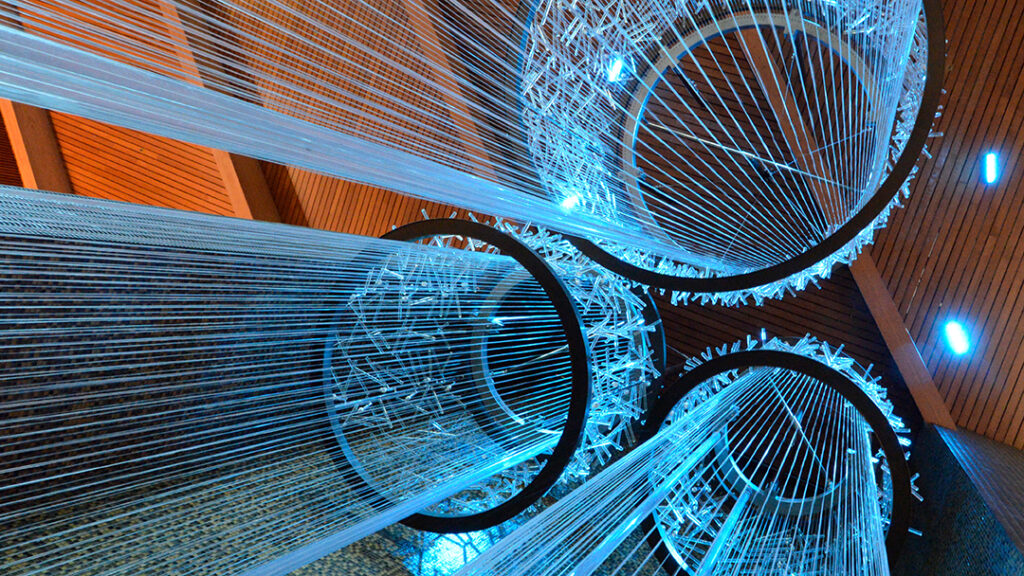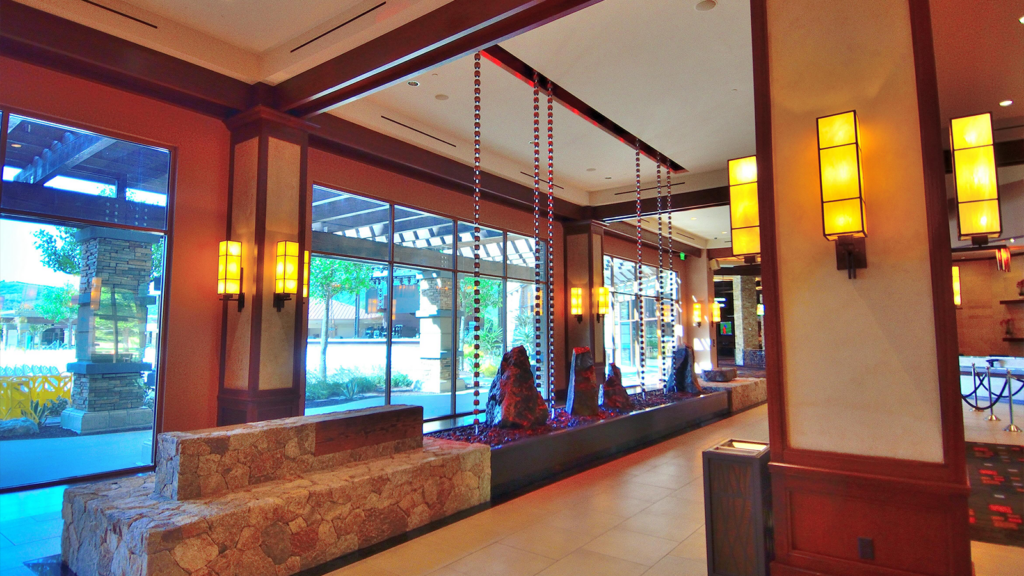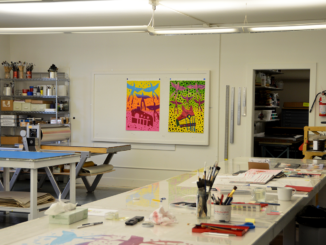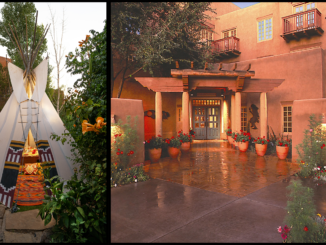
When you see a beautiful water feature in a casino or hotel lobby, do you ever wonder if it’s a waste of water? This is a common misconception, and actually, the opposite is true.
Water features can be sustainable – and beautiful – amenities that add interest to a hotel or casino, increase dwell time and revenue, and even help the entire property run more efficiently.
Here are some common questions about water features and sustainability, and the surprising answers.
How Do Water Features Conserve Water?
Starting with the first and most common misconception: aren’t water features just a waste of resources? In truth, most water features, especially more modern designs, are created with sustainability in mind.
Water features nowadays typically recirculate the water they use, so the only new water that needs to be added is to compensate for evaporation, splash, or leakage – which can all be minimized or eliminated with the proper design, construction, and maintenance.
That last element is crucial; a well-maintained water feature is not wasteful. In fact, routine maintenance of these projects is the key to efficiency. With today’s material technology and design practices, leak prevention has become much easier to achieve, making maintenance a targeted strategy. Keep in mind that while many maintenance systems are automated and can routinely dispense chlorine or acid to balance PH levels, most water features do require hands-on maintenance as well to remain highly efficient. This is time, money and effort well spent as it can pay off in reduced repair or replacement costs, lower operating costs, and fewer headaches down the line.
Even evaporative loss, especially in a well-designed water feature, is almost nonexistent for interior water features. What evaporative loss there is can be offset with a sustainable source for refill water. This makeup water can come from the air conditioning system’s naturally distilled condensate, instead of routing that water into the ground. Some states also allow for rainwater capture systems or for reclaimed grey water (from sinks or other non-sewer sources) to be used as sustainable refill water. These are all less expensive sustainable water sources that can be redirected to fountains and water features with a minimal environmental impact.

What is Sustainable About Water Features?
Today, sustainable design is practically a requirement in every building, and water features can be designed and built to integrate well with building systems to increase efficiency and reduce other costs.
For example, a lobby water feature can lower the humidity in the space around it, reducing the load on the building’s HVAC and saving energy and overhead costs. When connected to the building’s mechanical system, an outdoor water feature may also act as a heat sink for the HVAC, creating a passive heat exchange that substantially reduces energy usage inside the building.
Water features are a sustainable amenity, when designed and built with solid sustainable practices. This includes constructing the fountain from locally sourced materials and using reclaimed or recycled materials whenever possible. In some cases, this can require a more labor-intensive search for materials, but in the end, any additional time is well spent. Plus, obtaining materials from local sources supports local businesses and not only reduces shipping and handling costs but also lessens the environmental impact of shipping building materials long distances.
Aesthetically, water features utilizing natural materials for finishes should reflect the local geography, so using materials such as stone that is commonly found in the area only adds to the beauty of the design – making these projects unique and attracting guests to experience them.
Are Water Features a Sound Investment?
In addition to the many ways well-designed and built water features can reduce energy consumption and expense; they can also be a boon to revenue by helping to increase dwell time in casinos and onsite retail or restaurants.
Today’s water features can offer spectacular, awe-inspiring, multi-sensory experiences. These amenities can draw visitors from afar and become special locations for local guests to return to again and again. They can provide a beautiful and serene space for guests to take photos or an enjoyable way to pass the time while they wait for a table at an onsite restaurant – encouraging them to stay.
With new technology like AI, water features can even become interactive without the need for costly health department enhancements, allowing guests to be entertained and engaged without getting wet, which can increase dwell times and revenue in lobby stores and other in-hospitality retail.
Their intrinsic value demonstrates that water features are a sound investment for casinos and hospitality properties and can pay for themselves not only in energy savings but also in income gained from additional visitors.
As technology continues to evolve, there is no doubt that hospitality amenities will grow increasingly efficient and a critical component of sustainable design – providing must-have elements for hotel and casino stakeholders.
J. Wickham Zimmerman is the CEO of Outside the Lines, Inc., a design-build themed construction company that specializes in creating one-of-a-kind rockwork, water features and themed environments for retail entertainment, hospitality, gaming, and golf properties around the globe.



